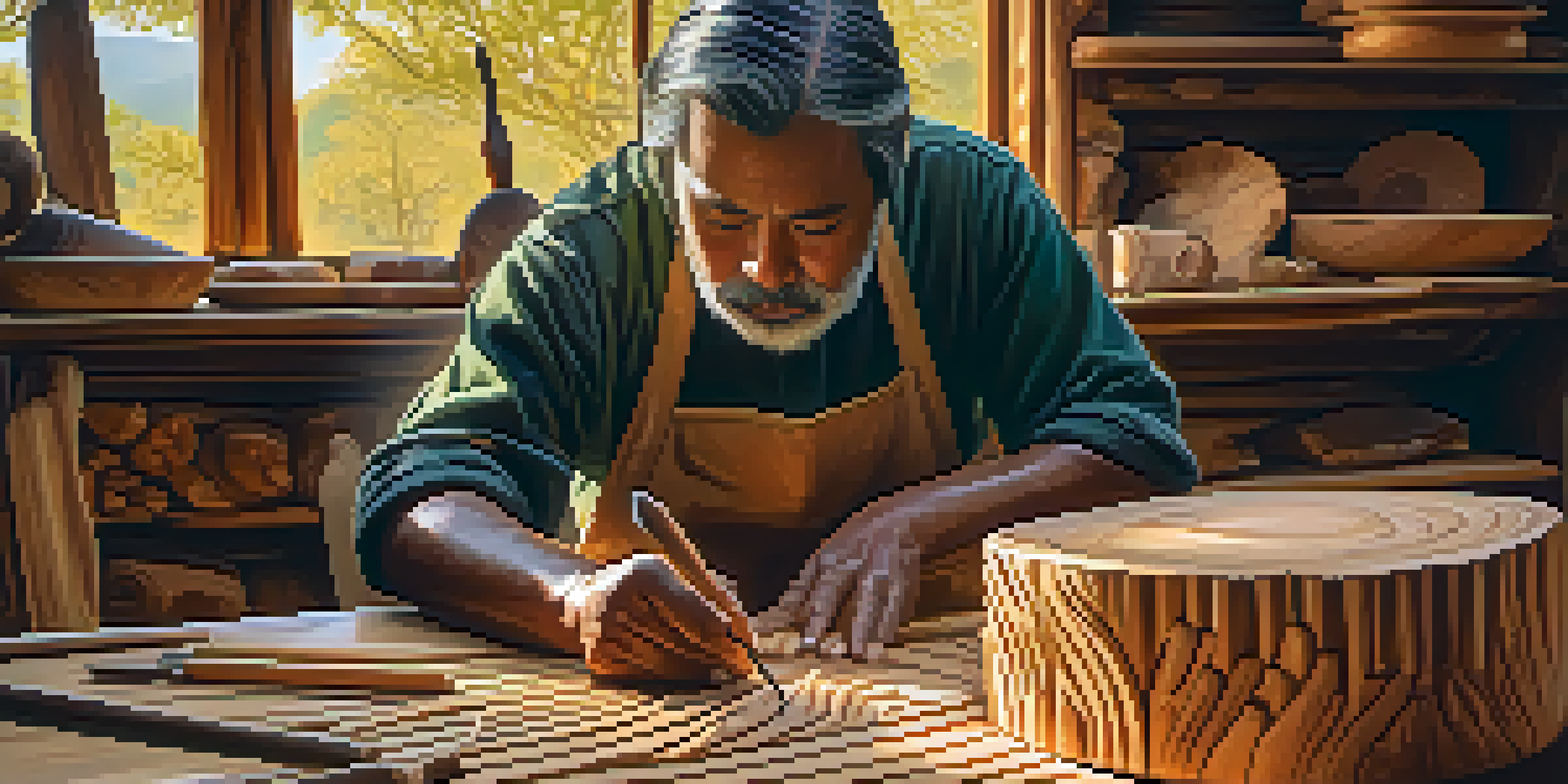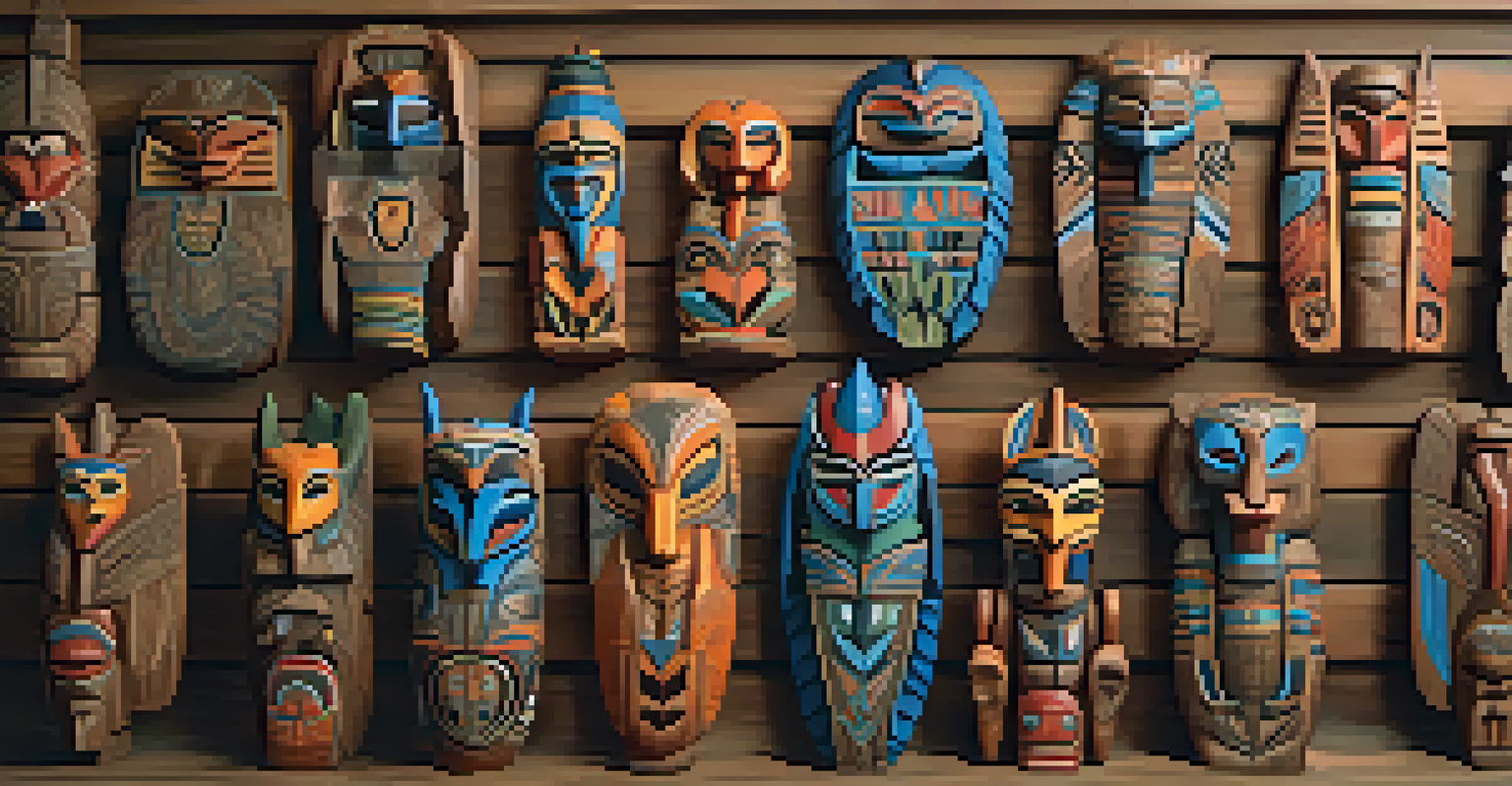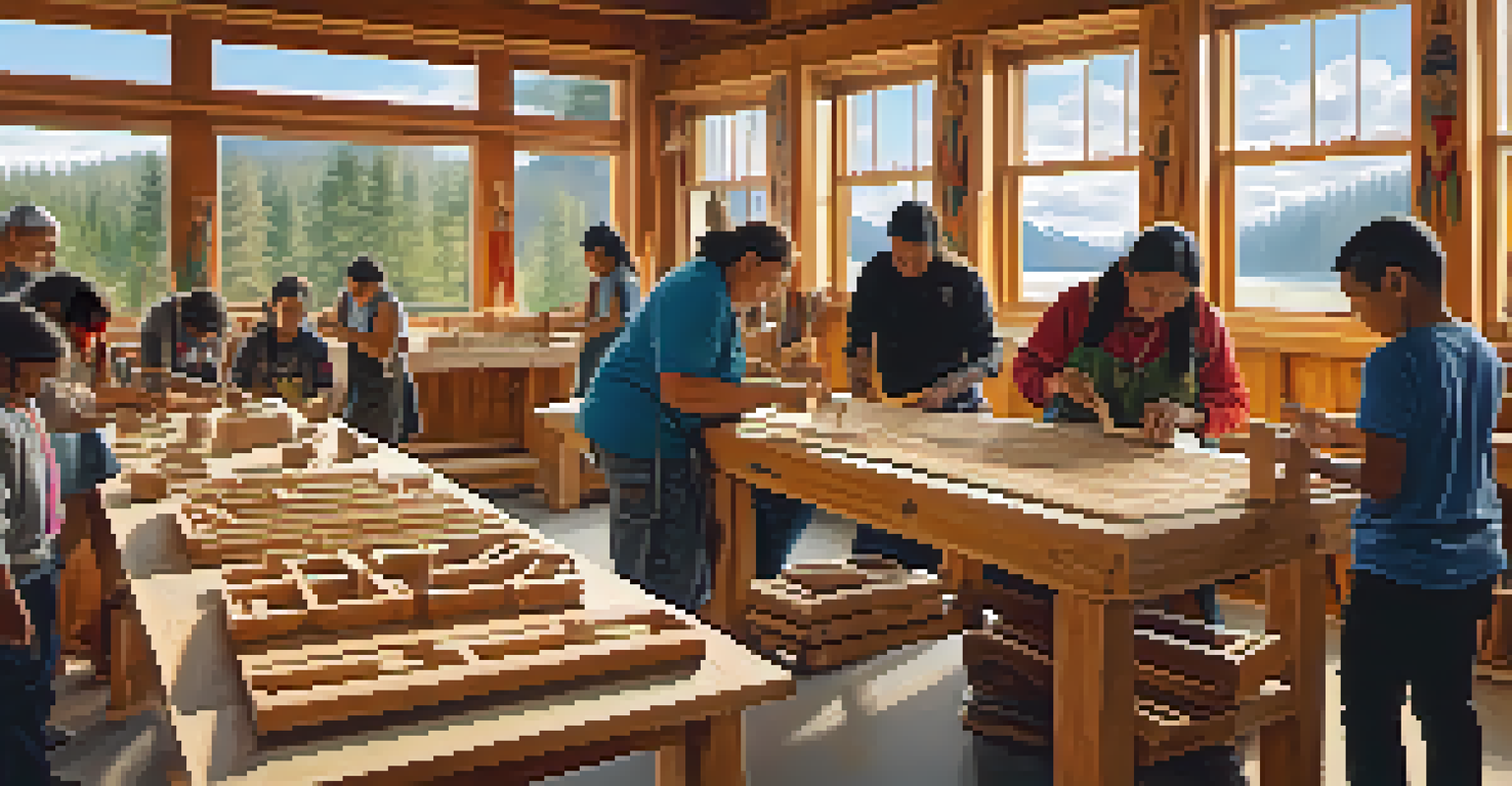Indigenous Carving Techniques: A Deep Dive into Tradition

Understanding Indigenous Carving: A Cultural Legacy
Indigenous carving is more than just an art form; it’s a vital cultural expression. Each piece tells a story, rooted in the history and beliefs of the community that created it. These carvings often represent spiritual connections, ancestral lineage, and the natural world, showcasing the deep relationship between Indigenous peoples and their environment.
Art is a way of expressing the soul of a culture.
Traditionally, carvers would use natural materials, reflecting the resources available in their region. This reliance on local materials not only honors the environment but also ensures that each piece is unique to its geographical context. For instance, cedar wood is a popular choice in Pacific Northwest tribes due to its durability and rich grain, making it ideal for totem poles and masks.
Over time, these carving techniques have been passed down through generations, often taught through apprenticeships. This mentorship fosters a sense of community and continuity, ensuring that the skills and stories embedded in each carving are preserved and celebrated.
Tools of the Trade: Traditional Carving Instruments
Indigenous carvers utilize a variety of tools, often handcrafted from materials that reflect their cultural heritage. Common tools include adzes, knives, and chisels, each designed for specific tasks. For example, an adze is perfect for shaping larger sections of wood, while finer knives are used for intricate detailing.

The process of making these tools is an art in itself, often involving the same traditional techniques used in carving. Many carvers create their tools from stone or metal, sometimes incorporating symbolic designs or motifs that carry cultural significance. This not only enhances the functionality of the tools but also connects the carver to their ancestors.
Cultural Significance of Carving
Indigenous carving serves as a vital cultural expression, reflecting the history, beliefs, and deep connection to the environment of the communities that create it.
In recent years, some contemporary carvers have begun to blend traditional methods with modern tools, exploring new creative possibilities. This evolution reflects the adaptability of Indigenous art forms while still honoring their roots.
The Role of Spirituality in Indigenous Carving
Spiritual beliefs play a pivotal role in Indigenous carving, often influencing the themes and subjects of the artwork. Many carvers view their work as a way to communicate with the spirit world, imbuing their pieces with meaning that transcends the physical. For instance, animal figures might be carved to represent guides or protectors in the spiritual realm.
The arts are a reflection of the culture that produces them.
Rituals and ceremonies often accompany the carving process, further emphasizing the connection between art and spirituality. These practices can include offerings, prayers, or the involvement of community members, fostering a collective spirit in the creation of each piece. This approach not only enriches the artistic process but also strengthens communal bonds.
As a result, each carving is not just a product but a living part of a cultural narrative. Carvers often see their creations as vessels of knowledge, sharing stories and teachings that reflect their people's beliefs and values.
Styles and Techniques: Regional Variations in Carving
Indigenous carving techniques vary widely across regions, each with its distinct styles and methods. For example, the intricate designs of Haida carvings from the Pacific Northwest contrast sharply with the bold, geometric patterns found in Plains Indian art. These variations speak to the diverse cultures and histories of Indigenous peoples throughout North America.
Some regions emphasize relief carving, where figures are raised from a background surface, while others may focus on in-the-round sculptures that can be appreciated from all angles. This diversity in technique reflects not only artistic preferences but also the availability of materials and cultural significance of the subjects depicted.
Spirituality and Community Bonds
The carving process is intertwined with spirituality and communal rituals, emphasizing the importance of storytelling and collective identity in each piece.
The choice of medium also varies; while wood is often the primary material, stone, bone, and ivory are utilized in different traditions. Each medium offers unique challenges and possibilities, influencing the final outcome of the artwork.
Contemporary Indigenous Carving: Blending Old and New
Today, many Indigenous carvers are exploring contemporary themes while staying rooted in tradition. This blending of old and new allows artists to address current social issues, cultural identity, and environmental concerns within their work. As a result, Indigenous carving has become a dynamic medium of expression that resonates with both Indigenous and non-Indigenous audiences.
Social media and online platforms have also played a crucial role in promoting contemporary Indigenous artists, giving them a global audience. This visibility helps to raise awareness about Indigenous cultures and traditions, fostering appreciation and understanding among a wider community.
Collaborative projects, community workshops, and public installations have become common, bridging generational gaps and encouraging dialogue. These initiatives not only celebrate the artistry of carving but also emphasize its importance in maintaining cultural heritage.
Preserving Indigenous Carving Traditions for Future Generations
As with many traditional art forms, Indigenous carving faces challenges due to modernization and cultural shifts. However, efforts are being made to preserve these traditions through educational programs, community initiatives, and cultural exchanges. By teaching younger generations the techniques and stories behind carving, communities can ensure that their heritage continues to thrive.
Cultural centers and museums often host workshops and exhibitions to engage the public and promote Indigenous artistry. These spaces serve as important resources for learning and appreciation, providing opportunities for hands-on experiences with carving techniques.
Modern Adaptations of Tradition
Contemporary Indigenous carvers blend traditional techniques with modern themes, addressing current social issues while preserving their cultural heritage.
Moreover, many Indigenous artists advocate for the recognition and respect of their art forms within the broader art community. By sharing their work and stories, they highlight the significance of carving not just as a craft but as a vital aspect of their cultural identity.
Conclusion: The Enduring Legacy of Indigenous Carving
The art of Indigenous carving is a testament to the resilience and creativity of Indigenous cultures. Each piece serves as a bridge between the past and the present, reminding us of the stories and traditions that shape our world. As we appreciate these artworks, we also honor the voices and experiences of the communities that produce them.
By supporting Indigenous artists and understanding the cultural significance of their work, we contribute to the preservation of these rich traditions. Engaging with Indigenous carving helps foster respect and appreciation for the diversity of human expression, enriching our collective cultural landscape.

Ultimately, Indigenous carving is more than just a visual art form; it is a powerful medium that connects us to our shared humanity, inviting us to reflect on the stories we tell and the legacies we leave behind.